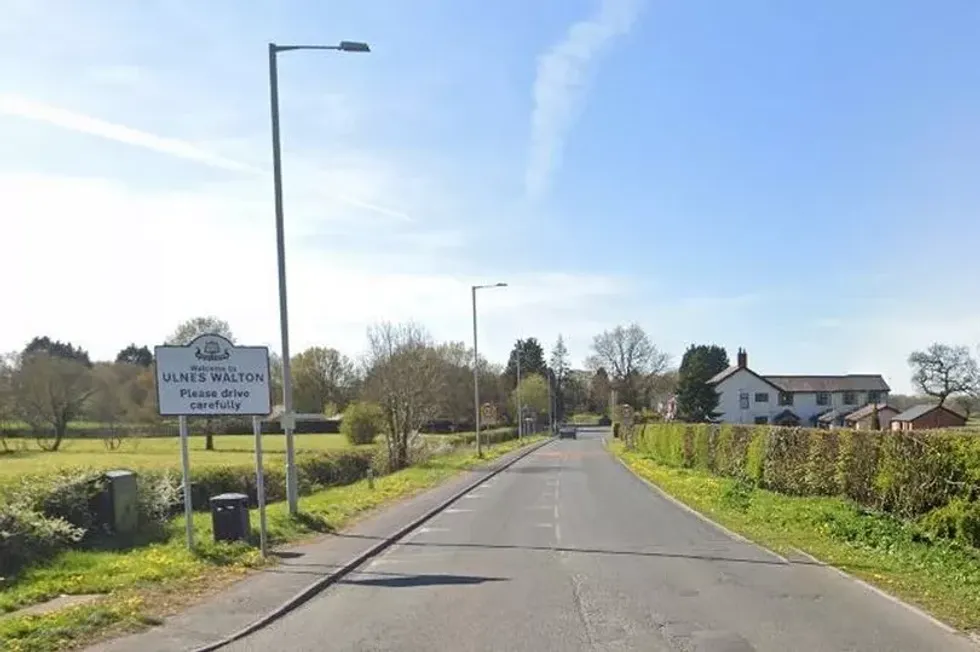Residents in a quiet Lancashire village have been left fuming over approved plans for a super-prison to be built on cherished green belt land.
Angela Rayner, as Secretary of State for Housing, Communities and Local Government, signed off the controversial new 1,700-inmate prison in Ulnes Walton.
The decision comes despite previous rejections from Chorley Council in 2021 and a planning inspector’s recommendation to dismiss the appeal.
The inspector had specifically cited concerns over road safety and the impact on green belt land.

Angela Rayner, as Secretary of State for Housing, Communities and Local Government, signed off the controversial new 1,700-inmate prison in Ulnes Walton
Google maps
The village, which has just 2,672 residents, already hosts two prisons – the Category C HMP Wymott with 1,170 inmates and Category B HMP Garth holding 845 prisoners.
Local residents, who have been campaigning against the prison plans since 2020, say their voices have been ignored by Whitehall despite compelling evidence against the development.
The new prison will create the mega-site, with three facilities housing a total of 3,800 inmates.
Local resident Dave Williams, whose property borders the existing facilities, will soon face a stark change to his view.
“From my house, I’ll have a big guard building and a five-storey accommodation block to look out to,” he told The Telegraph as he gestured towards the 107 acres of fields where the prison will be built.
Traffic concerns are at the forefront of local opposition, with residents highlighting the strain on rural infrastructure.
“The current site generates about 2,500 traffic movements a day for visitors, staff and deliveries down this country lane, which is used by runners, walkers, people out with their children. It’s even part of the Lancashire Cycleway,” Paul Parker from the Ulnes Walton Action Group said.
“Now double that with a new prison,” he adds, noting that even the planning inspector warned of “significant risk of harm.”
The construction phase will bring additional disruption, with Parker warning that “piling rigs and cranes” will inevitably affect the local community.
The Ulnes Walton Action Group emphasises their support for prisoner rehabilitation, but questions the location’s suitability.
“Look around you. There’s nothing here. Where are these people actually going to be working? And how would they get there anyway?” asks Helen Williams.
She points to the area’s isolation as a major concern: “There’s one bus service that runs hourly… we’re in the middle of nowhere.”
The group argues that spending £300 million on a rehabilitation-focused prison in an area where inmates will struggle to access work and reintegration opportunities makes little sense.
They stress their opposition isn’t about rejecting prisons entirely, but about choosing appropriate locations for successful rehabilitation.
Local residents are deeply skeptical about the promised economic benefits of the new prison.
“It said there would be 120 construction jobs in the original documentation,” Lynette Morrissey from the action group said.
“Fine, but only 10 per cent of those would go to local people. That’s 12 jobs.”
“You’ve seen what’s here,” says Dave Williams. “A corner shop. A garage. An equestrian centre. A garden centre. Tell me exactly how they will benefit from a prison being built.”
The Ulnes Walton Action Group is now considering a legal challenge to the decision.
They have six weeks to apply to the High Court for leave to bring a statutory review.
Meanwhile, they’ve extended an invitation to Angela Rayner to visit the site personally.
“Notwithstanding her decision, we would welcome a meeting on site with her and her minister to discuss why the local community consider this green belt location to be inappropriate for the development of a Category C prison intended to facilitate the rehabilitation and resettlement of offenders,” Parker said.